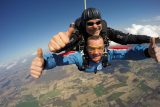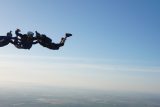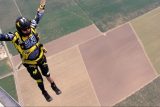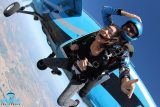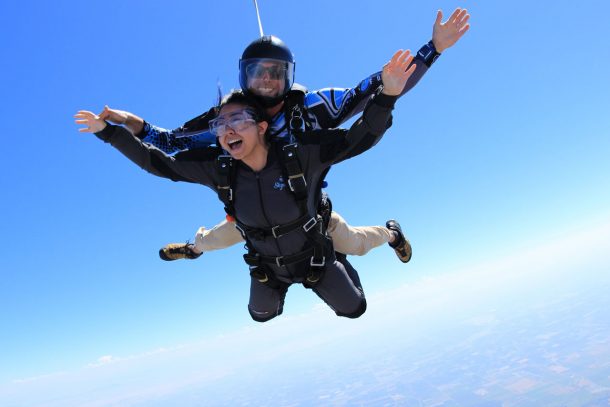Freefall in skydiving is exactly what it sounds like! This is the moment as soon as you exit the airplane and before the parachute is deployed where you are falling free through the skies.
Most people would agree that freefall is the most captivating and exhilarating part of the skydive. Wind rushing over your whole body, an unobstructed view thousands of feet above our beautiful planet, the incredible realization you’re falling through the sky with no strings attached (yet), feeling weightless … feeling free! Freefall is when all your dreams come true. This is what you came for.
The sensory overload can make freefall feel like the longest but also the shortest moment of your life all at the same time! You’ll be wondering, “Did time stop? What is going on here?!?” Here, we’ll explain how long freefall actually is, what can affect your duration of freefall, and how long skydiving takes from wheels up to touch down.
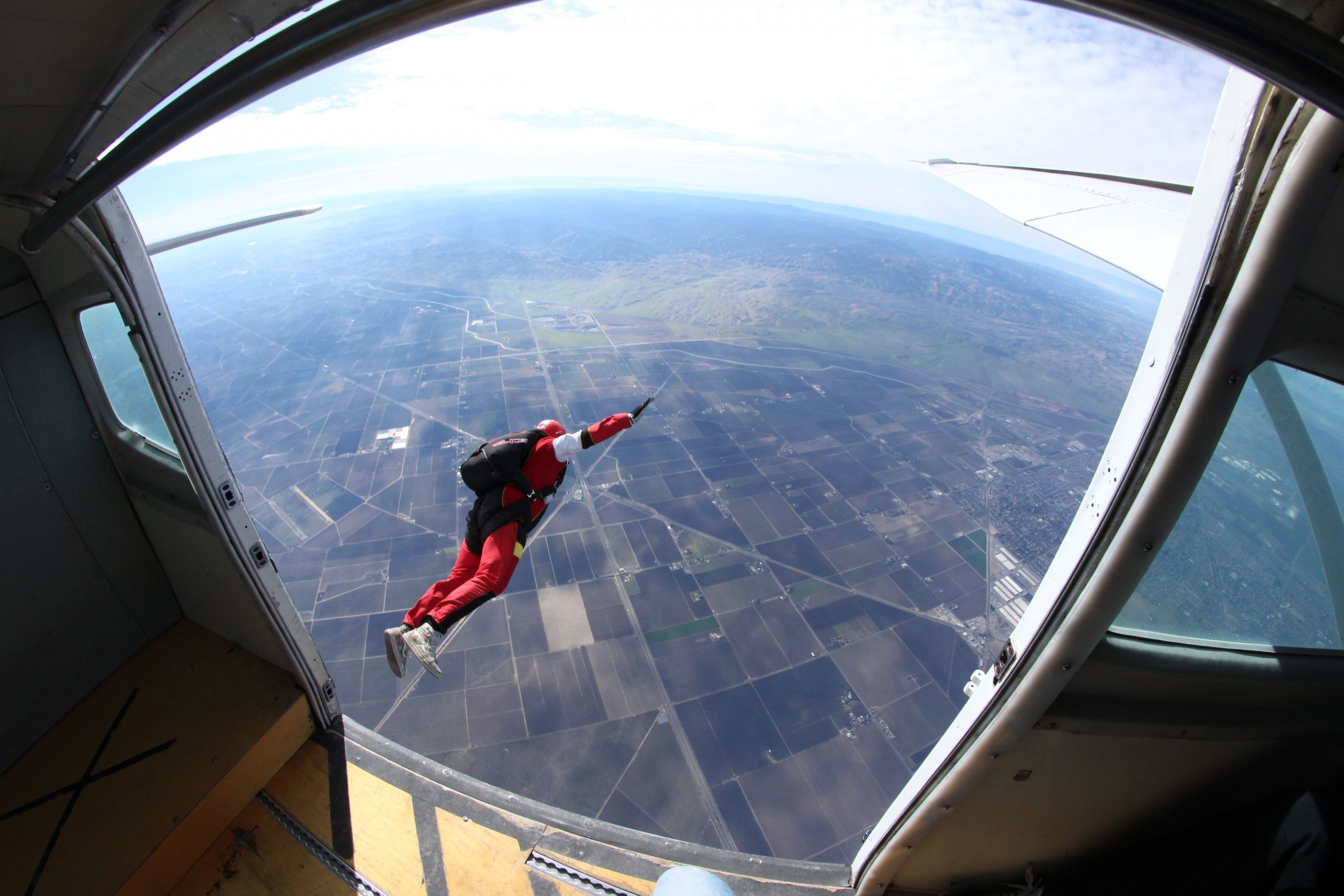
How Long Does a Skydive Last?
How long is skydiving from start to finish? While freefall is usually the most memorable part of skydiving, it is just the tip of the iceberg when talking about the entire skydiving experience as a whole.
There is a lot that needs to happen for that adrenaline-pumping plummet into pure beauty and bliss to happen. The entire process can take anywhere from two to four hours depending on the weather and business operations on the day of your jump. Let’s break down the entire skydiving process from start to finish:
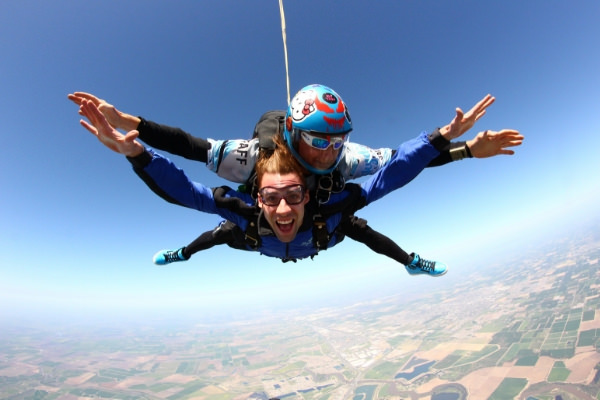
Check-in
Welcome to Skydive California! You’ll be greeted warmly by one of our helpful team members as they get you all checked in for your skydive. This is where you’ll fill out important paperwork, tie up any loose ends, and make any upgrades to your skydiving package if you want! (Psst… get the video!)
Training & Gearing Up
In skydiving, there are carefully calculated safety measures in place along every step of the way. This is why all of our guests need to attend a briefing before actually jumping out of an airplane. During your training, you’ll learn about the skydiving equipment we’ll use and go over everything you need to know for a successful skydive! You’ll meet your instructor and get kitted out with your special tandem harness and skydiving goggles. Get ready!!!
Airplane Ride
When your load is called, you’ll board the airplane and enjoy a 15-minute plane ride up to 13,000 feet in altitude. Woo hoo! Is your heart pumping yet?
Skydive
The actual skydive itself takes about eight minutes in total. You’ll fight off all your fight-or-flight responses as you approach the open airplane door with your instructor. When it’s time, you’ll jump into the big blue sky and fly free in mind-blowing, life-altering freefall. Around 5,500 feet, the instructor will deploy your shared parachute and you’ll enjoy a peaceful, sight-seeing ride back down to the ground.
Landing
Listen closely to your instructor as they guide you on how to properly land back on solid ground. Feel free to laugh, cry, scream – or whatever it is you need to do to express how you’re feeling at this moment! Once you’re out of your tandem harness, you are free to go about your day, or you can stay awhile! Either way, don’t forget to celebrate your phenomenal achievement. You did it!
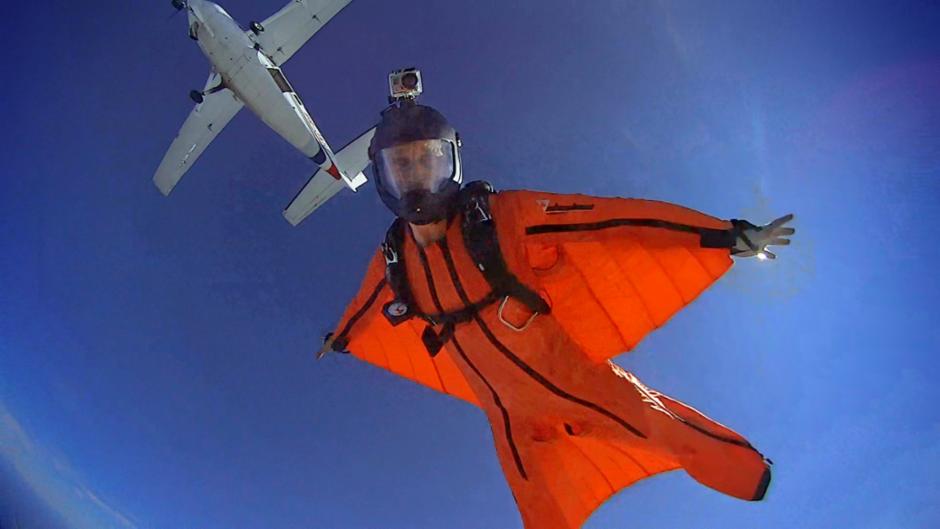
How Long Do You Freefall When Skydiving?
Skydivers need to deploy their parachutes by a certain height to assess the status of the canopy and have enough time to make life-saving decisions. Parachute deployment is anywhere from 3,500 to 5,500 feet so there’s only so much time for flying fun! And trust us, you’ll be loving every millisecond of it!
This is why the duration of freefall is significantly affected by the altitude from which you jump. Tandem skydiving altitudes usually range somewhere between 8,000 and 14,000 feet, with an average exit altitude of 10,000 feet. The altitude is determined by the dropzone that you’re jumping at. Here at Skydive California, we send our jumpers up to 13,000 feet – right in that sweet spot!
So, what’s the difference between altitudes? Well, on average a skydiver will fall about 200 feet per second. Jumping from 14,000 feet as opposed to 8,000 feet can double your freefall time. Here, let’s break down the average freefall times from different altitudes:
- 8,000 feet: About 30 seconds of freefall time
- 13,000 feet: 45 to 60 seconds of freefall time
- 15,000 feet: 60 to 70 seconds of freefall time
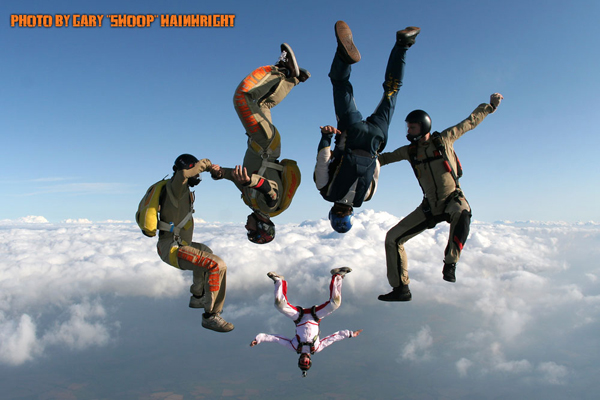
However, altitude is not the only determining factor for freefall time. Here are some other factors that can impact your freefall time, even in the slightest:
Total Weight
The heavier the weight, the faster you fall.
Orientation
On a tandem skydive, you’ll be flying in the most stable bodyflight position: belly-to-earth. Expert skydivers have become so good at flying that they can fly in all sorts of body positions, flying on their bellies or backs, in a sitting position, and even upside down! The less surface area you expose to the wind coming from up underneath, the faster you descend. And the opposite is true – the more surface area to the wind, the slower you descend.
Type of Skydive
Skydivers are pretty clever and have used creative freefall techniques to extend the duration of freefall and maximize the freefall experience. One example of this is the invention of the wingsuit. Wingsuits, or squirrel suits, are special suit that transforms your entire body into a wing, giving you more time to flyyy! Wingsuiters can increase their freefall up to three minutes, depending on the wingsuit’s design and the experience of the skydiver. Another example in the opposite direction would be hop ’n pops, where skydivers have little-to-no freefall time. This is where the skydiver will jump out and immediately deploy their parachute to hone in on their canopy skills.
Air Density
Yep, although less significant than the other factors, it is worth mentioning that even air density and weather can play a role in freefall time. Denser air can slightly slow down freefall speeds, giving you more freefall time. Hey, we’ll take it!
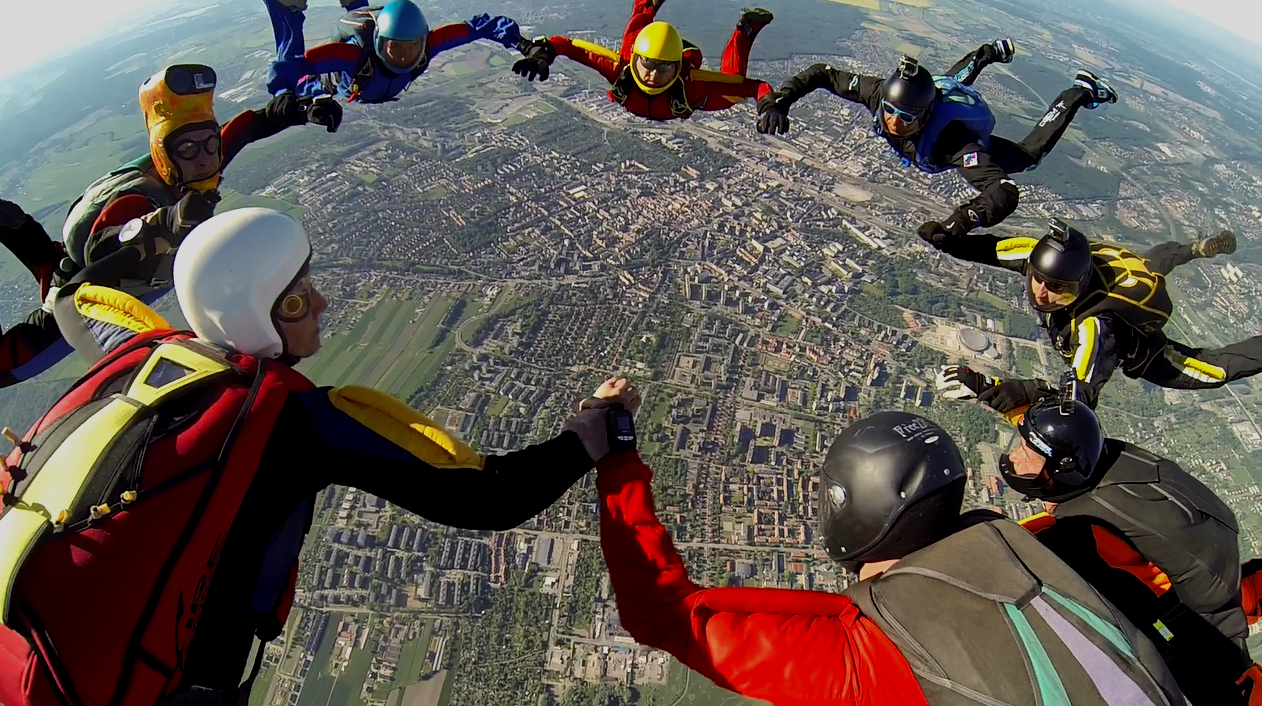
How Fast Do You Fall When Skydiving?
How fast do skydivers fall? The factors that impact your freefall time also impact your freefall speed. Terminal velocity is the fastest speed you’ll reach during freefall based on gravity, weight, air density, surface area, and air resistance. Terminal velocity for a skydiver flying in a stable belly-to-earth body position usually rests around 120 mph for most people. Sounds amazing, right? It is.
Ready to experience a whole 60 seconds of pure adrenaline-fueled bliss? Book a skydive with Skydive California and experience the magnificent feeling of human flight! Blue skies!
